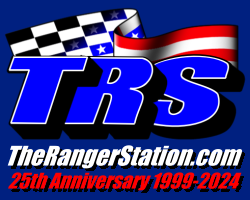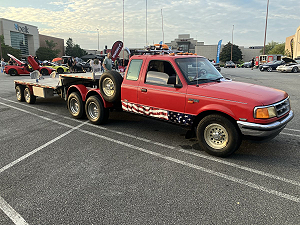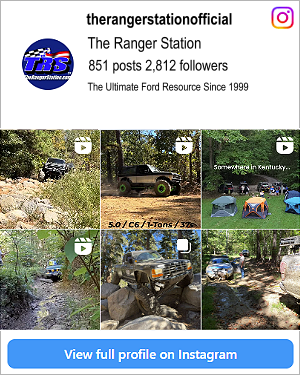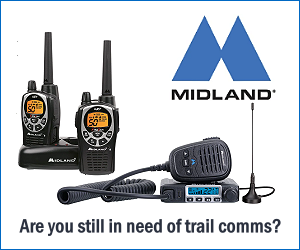- Joined
- Sep 22, 2007
- Messages
- 13,394
- Reaction score
- 8,656
- Location
- Michigan
- Vehicle Year
- 1987
- Make / Model
- Ford
- Engine Type
- 2.9 V6
- Engine Size
- 177 CID
- Transmission
- Manual
- 2WD / 4WD
- 2WD
- My credo
- A legend to the old man, a hero to the child...
97 F250 HD 2wd 460 Auto
Over the past 6 months or so ive noticed a hum/vibration (slight) that seems to be getting worse.
Initially i wrote it off as tire noise because it seemed to change tone on fresh vs older pavement.
But friday after the truck had sat probably 3 or 4 weeks i drove it and it was pretty bad. Its only noticable between 50-60mph with the worst of it being at 55. However it did lessen in severity the further i drove it but it didnt go away.
I also noticed it stops when you are coasting so that kinda kills the tire noise theory.
It seems to be coming from right under the cab or back. My gut reaction is a U joint but i never hear any clunking while changing gears.
It has a carrier bearing/2 piece drive shaft so im wondering if that could be it? But i always understood those got noisy while coasting and not under torque?
Or could it possibly be more serious like a pinion bearing? Ive never had one of those go out. But its not leaking from it.
I havent crawled under it yet cause its cold as shit and i dont drive it much but i need to get it fixed before spring when i use it the most.
Any input?
Over the past 6 months or so ive noticed a hum/vibration (slight) that seems to be getting worse.
Initially i wrote it off as tire noise because it seemed to change tone on fresh vs older pavement.
But friday after the truck had sat probably 3 or 4 weeks i drove it and it was pretty bad. Its only noticable between 50-60mph with the worst of it being at 55. However it did lessen in severity the further i drove it but it didnt go away.
I also noticed it stops when you are coasting so that kinda kills the tire noise theory.
It seems to be coming from right under the cab or back. My gut reaction is a U joint but i never hear any clunking while changing gears.
It has a carrier bearing/2 piece drive shaft so im wondering if that could be it? But i always understood those got noisy while coasting and not under torque?
Or could it possibly be more serious like a pinion bearing? Ive never had one of those go out. But its not leaking from it.
I havent crawled under it yet cause its cold as shit and i dont drive it much but i need to get it fixed before spring when i use it the most.
Any input?














